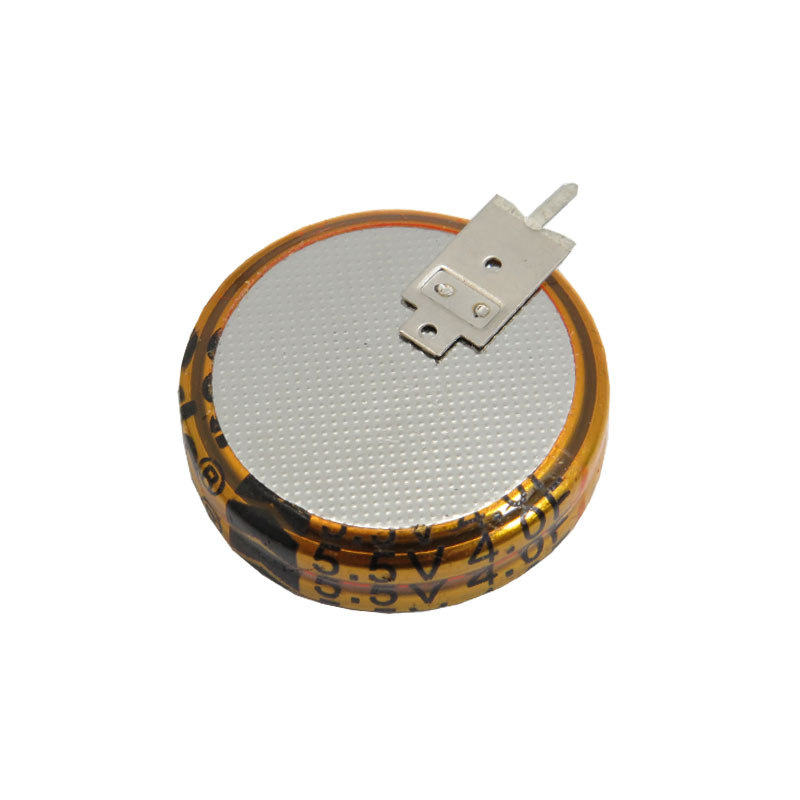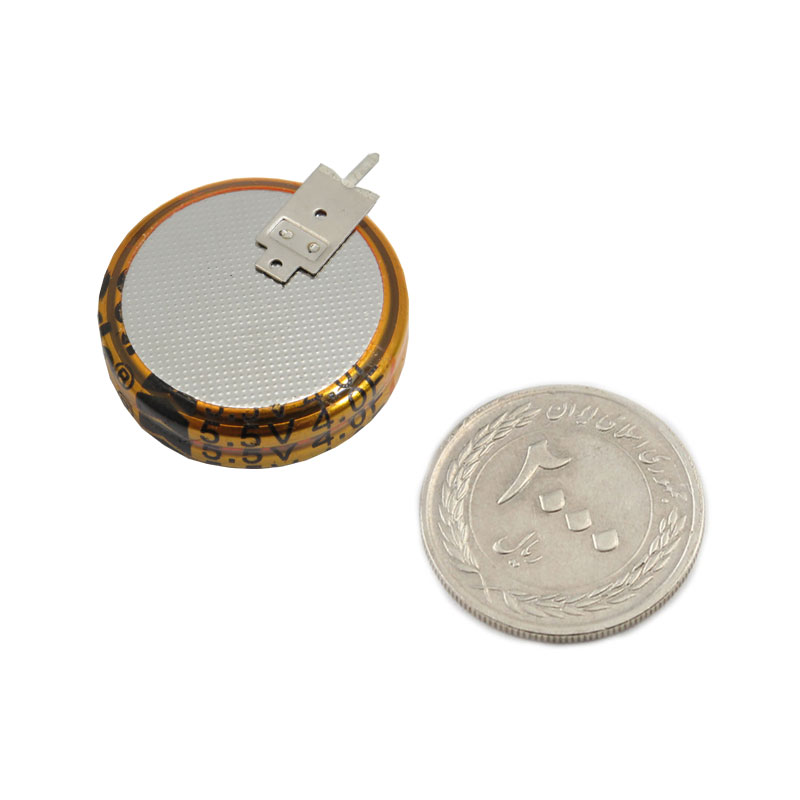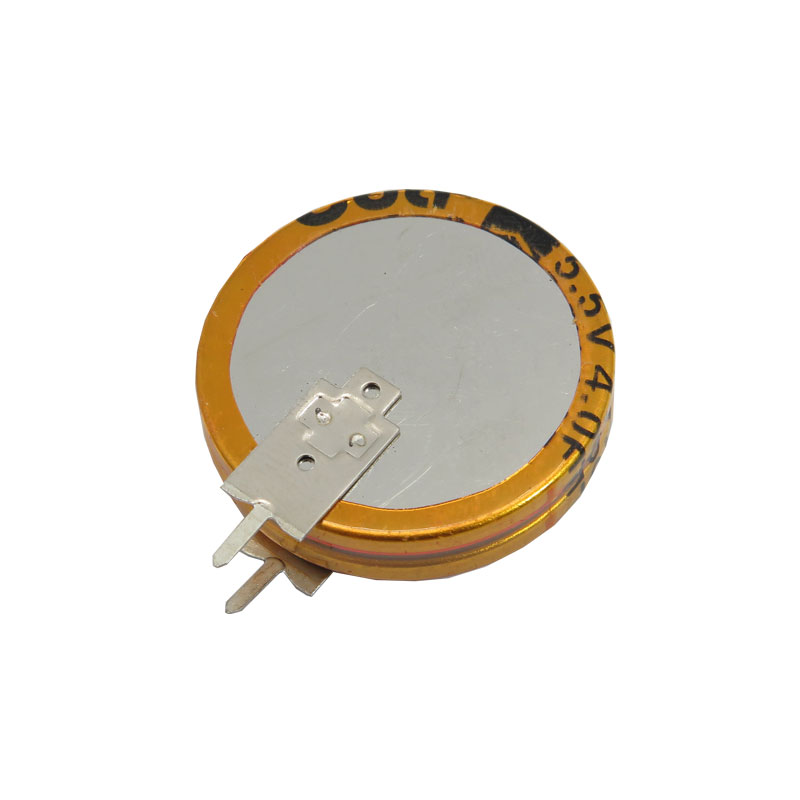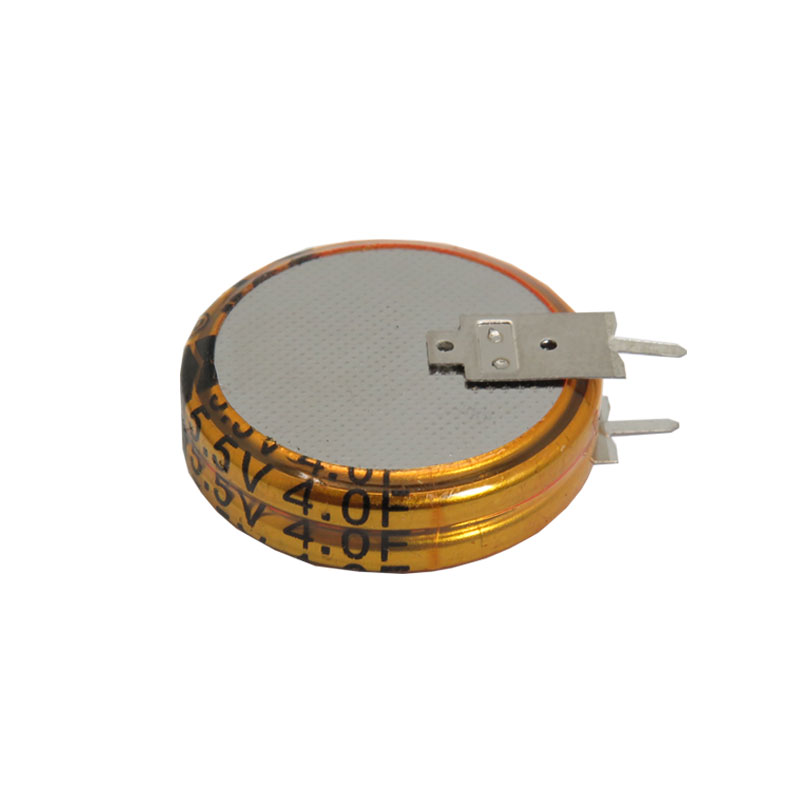83,300 تومان
کالا موجود استموجودی انبار : 75 عدد
علاقه مندان : 9 نفر
وضعیت : فعال
تعداد مرجوعی : 0
دنبال کنندگان : 10 نفر
قدمت : 9 سال و 3 ماه و 22 روز
وزن : 7 گرم
کل فروش : 2244 عدد
تعداد سفارش ها : 514 سفارش
4 از 5.0 با 11 رای
ابر خازن 4 فاراد 5.5 ولت 4F 5.5V Super Farad Capacitor
خازن المان الکتریکی است که میتواند انرژی الکتریکی را توسط میدان الکترواستاتیکی (بار الکتریکی) در خود ذخیره کند. ابرخازنها که به خازنهای دولایه (Double Layer Capacitor) و Ultra-Capacitor نیز معروف هستند، توانایی ذخیره بار الکتریکی بسیار بیشتر از خازنهای معمولی را دارند. خازن دولایه 4 فاراد می تواند جایگزین مناسبی برای باتری های ولتاژ پایین باشد.ابر خازنها در واقع یک خازن دولایه هستند که نسبت به خازنهای معمولی ظرفیت بسیار بالاتری دارند اما ولتاژ قابل تحمل (ولتاژ شکست یا break down voltage)، پایین است. ظرفیت ابر خازنها معمولاً بیش از 10 میلی فاراد و در رنج فاراد است که باعث به وجود آمدن کاربردهای وسیعی برای آنها میشود که این باعث شده قیمت آنها در مقایسه با خازنهای معمولی بالاتر باشد.
استفاده از خازن های ظرفیت بالا به جای باتری دارای مزایایی از جمله جریان دهی بالاتر، تعداد دفعات شارژ بیشتر و طول عمر بالاتر می باشد.
کاربرد سوپر خازن 4 فاراد 5.5 ولت :
- استفاده برای فلاشهای LED دروبینهای عکاسی
- تثبیت کننده منبع توان در لپتاپها و سایر ادوات الکترونیکی
- تامین انرژی ادوات CMOS، کلاک و میکروپروسسورها
- وسایل نقلیه هیبرید یا دوگانه سوز
- ریل
- تجهیزات صنعتی سنگین
- سیستم های تلکام UPS
مشخصات سوپر خازن 4 فاراد 5.5 ولت :
- محدوده دما: -25 تا 70
- ولتاژ کاری: 5.5
- ولتاژ ضربه ای (Surge Voltage) : 6 ولت
- ظرفیت: 4F
- خطای ظرفیت خازنی مجاز: -20% ~ +80%
- خطای ظرفیت کنترل شده: -20% ~ +20%
- ESR : 20 Ω
- جریان نشتی: 15µA
مستندات:
دیتا شیت سوپر خازن 4F-5.5V
Description:
A supercapacitor (SC), also called an ultracapacitor, is a high-capacity capacitor with a capacitance value much higher than other capacitors, but with lower voltage limits, that bridges the gap between electrolytic capacitors and rechargeable batteries. It typically stores 10 to 100 times more energy per unit volume or mass than electrolytic capacitors, can accept and deliver charge much faster than batteries, and tolerates many more charge and discharge cycles than rechargeable batteries.
The supercapacitor has evolved and crosses into battery technology by using special electrodes and electrolytes. While the basic Electrochemical Double Layer Capacitor (EDLC) depends on electrostatic action, the Asymmetric Electrochemical Double Layer Capacitor (AEDLC) uses battery-like electrodes to gain higher energy density, but this has a shorter cycle life and other burdens that are shared with the battery.
The supercapacitor is often misunderstood; it is not a battery replacement to store long-term energy. If, for example, the charge and discharge times are more than 60 seconds, use a battery; if shorter, then the supercapacitor becomes economical.
Supercapacitors are ideal when a quick charge is needed to fill a short-term power need; whereas batteries are chosen to provide long-term energy. Combining the two into a hybrid battery satisfies both needs and reduces battery stress, which reflects in longer service life. Such batteries are being made available today in the lead-acid family.
Application:
Grid power buffer
Voltage stabilizer
Micro grids
Energy harvesting
Transportation
Energy recovery
Hybrid electric vehicles
Regenerative braking
Wind turbines
Features:
Temprature Range : -25 ~ 70
Operating Voltage : 5.5
Surge Voltage : 6v
Capacitance Range : 4F
Permitting Capacitance Error Tolerance: -20% ~ +80%
Controlled Capacitance Error : -20% ~ +20%
ESR : 20 Ω
Leakage Current : 15µA



